The Rise of the Micro-Buyer: How SaaS Lead Generation Companies Are Powering Faster B2B Decision
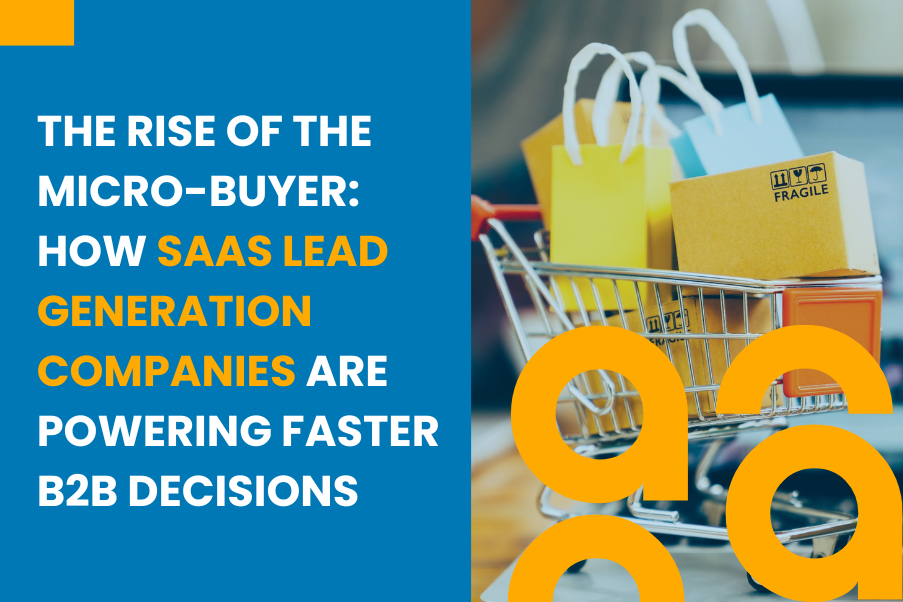
Introduction
A few years ago, your team handled long buying cycles filled with calls and approvals. Today, a small pod inside a US company can study options during lunch, compare tools within an hour, and submit a request before the day ends.
That pod is the new micro buyer.
They move fast, rely on quick research, watch short demos, and pass links across internal channels. Once someone says, “This one explains our problem clearly,” the direction is set.
In B2B SaaS, clarity wins. A modern saas lead generation company helps you deliver that clarity by surfacing ready accounts, placing the right content, and guiding these fast evaluators toward a confident choice.
This blog shows who micro buyers are, how they think, and how a saas lead generation company uses intent data, syndication, and behavioral signals to match their speed.
Who Is The Micro Buyer In B2B SaaS?
Micro buyers act as internal researchers across RevOps, analytics, security, and growth teams. They may not sign the deal, yet they shape shortlists, influence direction, and guide early preferences more than anyone else.
Their impact is growing fast. The 2025 Buyer Behavior Report shows sellers receive only 17 percent of total buyer time, while the rest goes to private research and internal discussions.
So micro buyers:
- Discover vendors through search, referrals, content syndication, and social channels.
- Compare options based on clarity, proof, and how quickly a vendor removes confusion.
- Guide leadership toward one preferred choice long before a sales conversation.
To see why they move so smoothly, SaaS teams must understand the flexibility of the category. Many still search “what is b2b saas” to understand how it supports quick evaluation. B2B SaaS offers subscription access, fast onboarding, and modular features that teams can test early, which fits the micro buyer workflow perfectly.
A strong saas lead generation companies helps meet these expectations by creating content and signals that support fast internal research. Today’s top b2b saas companies win more deals because they communicate value in short, direct messages that micro buyers can easily share with internal decision makers.
Why Buying Cycles Look Long But Move Fast Internally
Most reports describe long enterprise buying cycles. For example, Corporate Visions notes a typical B2B cycle of 11.5 months for complex deals.
Still, inside that cycle, micro decisions keep accelerating.
A 2025 buyer study reveals that 80 percent of buyers contact vendors only after finishing 70 percent of their internal research. By that stage, 81 percent already favor one provider.
This means that even though the full cycle contains many steps, micro buyers are shaping the direction earlier and faster.
So when a new inbound lead arrives, chances are they already:
- Compare your product with alternatives.
- Viewed syndicated pieces through third-party publications.
- Watched a short demo or feature breakdown.
This is where a saas lead generation company becomes essential. They help you stay visible during those early, unseen moments. Strong b2b lead generation services position your brand during the silent research stage, not just when the buyer fills a form.
How Micro Buyers Make Decisions In Minutes
Micro buyers follow a predictable pattern when evaluating SaaS tools.
1. Signal spotting
They recognize a business gap. It could be disconnected data, slow reporting, unstructured workflows, or revenue leakage. At this point, they search topics related to “what does b2b saas mean for operations” or “best platforms for pipeline tracking.” They want simple, role-specific explanations, not jargon.
2. Shortlisting with proof
They want clarity fast. They scan pricing pages, integrations, short case studies, and comparison charts. A saas lead generation company supports this stage by placing the right content where micro buyers already spend time.
3. Internal recommendation
Micro buyers typically surface two or three options. They need assets that leadership can read quickly, such as brief summaries, ROI snapshots, or one-page comparisons.
Consensus reports show that shorter product experiences outperform longer demos. Micro buyers expect this. They want answers that fit into quick internal discussions.
This means your b2b lead generation funnel must condense education, validation, and trust building into shorter steps without losing depth.
The Data Engine Behind Micro Buyers: Intent, Syndication, And Behavioral Signals
A modern saas lead generation company helps you identify micro buyer activity long before they reach out. Three pillars drive this engine.
1. Intent data
Intent data platforms track research spikes and keyword patterns. A 2025 guide shows 65 percent of marketers improved forecasting accuracy after activating intent signals.
This helps you:
- Detect early interest.
- Predict active accounts.
- Match outreach to current research themes.
2. Content syndication
The goal is to make relevant content appear where buyers already read. Strong providers distribute articles, guides, and case studies built around buyer problems.
Almoh Media’s B2B content syndication services aligns content with search behavior, sending validated contacts back to your CRM based on engagement.
3. Behavioral scoring
Micro buyers often take several small actions in a short window. A strong scoring model catches this pattern by measuring recency, frequency, and asset depth.
This gives your sales team clearer access to b2b saas leads who are ready for a conversation.
Building A Micro-Buyer-Ready B2B Lead Generation Funnel
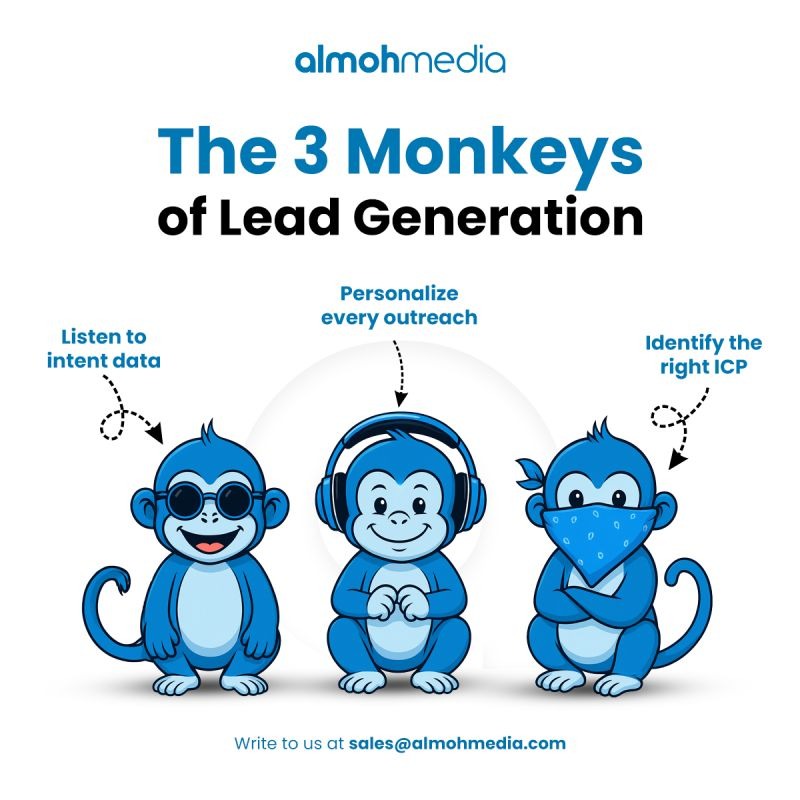
1. Awareness based on clarity
Your content should help each role understand how your product fits their goals. A saas lead generation company can test role-specific content that answers “what is b2b saas” in the right context.
2. Evaluation built around speed
Show how you compare with top b2b saas companies using easy-to-read charts, brief demos, and clear outcomes. Your b2b lead generation tactics should guide buyers to the evidence they need without long waits.
3. Decision support
Micro buyers must present your product internally. Give them polished summaries, ROI highlights, risk clarifications, and technical notes they can share instantly. A skilled saas lead generation company builds these assets to remove friction during internal approvals.
Reports on fast-growing SaaS firms show that structured lead systems outperform loose outreach models. A reliable saas lead generation company provides that structure.
How Almoh Media Supports SaaS Teams As A Strategic SaaS Lead Generation Company
Almoh Media helps SaaS teams build a steady, high-intent pipeline through focused programs that move micro buyers toward real conversations. As a saas lead generation company, the goal is simple: bring in prospects who match your ICP and are ready to engage.
Content syndication aligned with intent

Almoh Media distributes educational content, comparison assets, and case studies to channels that micro buyers trust. This creates early familiarity and brings in contacts who match your target criteria for b2b saas leads.
Email journeys are shaped around behavior

Email programs adjust based on buyer activity. Someone who views pricing gets a budget-focused follow-up. Someone reading technical pages receives integration guidance. This alignment helps both established and challenger top b2b saas companies reach the right roles with the right tone.
Telemarketing with context
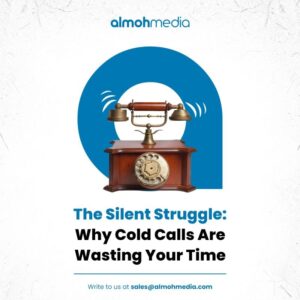
When a conversation is needed, we connect with prospects who are already engaged with your content. Each call aims to clarify interest and hand over sales-ready opportunities.
Across syndication, email, telemarketing, ABM, demand programs, and data support, we provide a connected system that strengthens your pipeline with simplicity and consistency.
Practical Steps To Align Your GTM Motion With Micro Buyers
You do not need a full rebuild to match micro buyer speed. You can begin with a few focused adjustments.
- Review your content path: Check if your site helps an operations or finance lead understand your value quickly. Does it explain “what is b2b saas” clearly and show how you compare with top b2b saas companies? If not, simplify the journey.
- Optimize your scoring model: Patterns like repeat visits or rapid pricing checks often signal interest. Update scoring rules to catch these behaviors and route qualified b2b saas leads to your team fast.
- Link intent with syndication: Partner with a saas lead generation company to identify topics tied to conversions. Use those themes to shape your syndicated content and strengthen your b2b lead generation tactics.
- Strengthen internal selling assets: Give micro buyers quick summaries, clear answers, and simple deployment notes. A skilled saas lead generation agency can create these assets based on common objections across US accounts.
Final Thought: Win By Giving Micro Buyers Clarity First
B2B journeys still involve many steps, yet early decisions form faster than ever. Most buyers prefer independent research and expect vendors to support that process with simple guidance and clear answers.
The brands that stand out offer clarity early. They reduce confusion, present proof quickly, and align content with real micro buyer behavior.
Almoh Media helps you do this through intent data, targeted syndication, and structured outreach. If you want a pipeline built for modern buying speed, connect with us and let our team support your growth as your trusted saas lead generation company and saas lead generation agency.
Introduction
If you’re using content syndication, chances are you see it as just another way to get your content in front of more eyes. That’s fine, but there’s a lot more hidden beneath the surface. When you allow its full potential, content syndication ROI can surprise you, and it doesn’t take much to shift perception.
Let’s look at fresh data, outline a winning content syndication strategy, and show how U.S. B2B teams can get real value from it. Let’s begin!
What Is Content Syndication?
At its simplest, content syndication means sharing your B2B content: whitepapers, case studies, blogs on someone else’s site or network. This can be paid or free. You expand your reach, tap into new networks, and generate visibility, often reaching audiences you’d otherwise miss.
Why ROI From Content Syndication Deserves a Second Look
1. Huge lead production for relatively low spend
According to recent studies, the average cost per lead with content syndication is around $43. That’s far lower than other tactics, so even moderate conversion rates can offer solid returns.
2. Fast pipeline growth
Some platforms report that customers see 300–500% return on investment within three years. That’s not fluff – it’s real pipeline growth.
3. Verified conversion tracking methods
With UTM tagging and targeted vendor reports, U.S. marketers can track everything from initial syndication click to closed deal.
4. Built-in trust and positioning
Syndicating through known sites can give you indirect credibility, boosting brand awareness and authority without extra effort.
B2B Content Syndication Strategy: How to Do It Right
A good content syndication strategy starts long before content hits a third-party platform:
a). Pick assets that matter
Whitepapers, case studies, and long-form guides work best. They not only attract interest but also help establish your brand as industry-relevant.
b). Target lead quality, not rush volume
Instead of chasing clicks, target professionals. For example, top B2B firms average a 5.31% conversion rate on syndication offers.
c). Tag everything with UTM links
Measure traffic, engagement, bounce rates, and conversions back at your URL. This helps with syndication attribution.
d). Track core metrics
- CPL (cost per lead)
- MQL-to-SQL conversion rates
- Revenue per lead (use your average contract value)
e). Use the ROI formula
ROI= Revenue−Spend
Spend
For example, $1,000 spent → 50 high-quality leads → $5,000 average value = ($250k – $1k)/$1k = 249× ROI.
f). Optimize, rinse, repeat
Check what works by audience, site, and format. Then double down and drop what doesn’t.
Concrete U.S. ROI Stats You Can’t Ignore
| Metric | Statistics/Insight |
| Cost per lead | $43 average CPL |
| Syndication conversion rate | ~5.31% typical |
| Lead-to-deal conversion lift | 45% increase when focus is on quality |
| ROI over 3 years | 300%–500% reported |
| Projected industry growth | From $4.7 B in 2022 to $5.9 B by 2030 |
Content Syndication for Lead Gen: A Step‑by‑Step Plan
1. Define your ideal audience
Use buyer personas: titles, sectors, company size – so your content finds the right hands. This way, a sharper audience focus helps eliminate wasted spend and improves downstream lead quality.
2. Pick content with substance
Original research, how-to guides, competitive whitepapers – these both educate and convert. Plus, assets that solve specific problems tend to drive stronger engagement and more intent-driven leads.
3. Choose partners wisely
Use third-party platforms to reach U.S. B2B audiences. Look for those offering clear lead reporting and media kits. Before moving forward, ask for case studies or past performance metrics to make a more informed decision.
4. Structure campaigns with UTM tags
Make distinct tracking links for each partner and asset. This makes sure it’s easier to attribute leads, identify top performers, and compare ROI across channels.
5. Launch and monitor
Track CPL, CPL-to-SQL, cost per opportunity, pipeline driven, and revenue tied. At the same time, monitor activity in real-time to catch early trends and shift strategy fast if needed.
6. Review and refine monthly
Use metrics to shift spend toward top performers and tweak underperformers. As a result, consistent optimization keeps your syndication efforts aligned with revenue goals, not just vanity metrics.
How to Calculate Content Syndication ROI
- Calculate total spend (vendor fees + internal costs).
- Count total leads.
- Multiply leads by average deal size for potential revenue.
- Apply the ROI formula:
Revenue−Spend
Spend - Compare ROI over time to benchmark your initiatives.
This method is backed by multiple calculators and case studies.
Hidden Content Syndication Benefits
- SEO gains: Backlinks from quality sources can raise domain authority.
- Brand authority: Recognition on respected sites = credibility.
- Extended content life: A blog post can live on for months if syndicated well.
- Nurture acceleration: Leads from syndication are often further along in buying cycles.
Mistakes to Avoid and Fix Fast
Mistake: Only tracking clicks, not deals.
Fix: Tie every lead back to conversions with CRM integration. That way, you get a clearer picture of what’s actually driving revenue, not just traffic.
Mistake: Focusing only on cheap volume.
Fix: Go after quality; MQL-to-SQL rates matter most. Otherwise, your sales team will waste time on leads that won’t convert.
Mistake: Publishing irrelevant content.
Fix: Audit content – ensure tone, relevancy, and depth match syndication partner audiences. In doing so, you increase the chances of your content resonating with the right decision-makers.
Mistake: Not optimizing over time.
Fix: Regular performance review. Cut poor performers, boost winners. Over time, this helps improve ROI and keeps your content syndication strategy focused and results-driven.
Why Lead Quality Beats Volume
Not all leads are created equal. A smaller batch of high-intent leads can drive more revenue than a huge pool of low-interest ones.
Many B2B brands in the USA are shifting toward account- based syndication, where campaigns are matched to specific industries or companies. This helps improve conversion rates, shorten sales cycles, and increase customer lifetime value.
In short, prioritizing lead quality helps improve the long-term content syndication ROI, especially when targeting high-ticket accounts.
How AI Is Shaping the Future of Syndication
AI tools are starting to reshape content syndication strategy by analyzing behavior patterns and automating placements across high-performing channels.
With predictive scoring, marketers can now:
- Match content formats to individual user segments
- Forecast lead readiness using engagement scores
- Automate syndication at scale using content intent data
These innovations are raising the ceiling on what’s possible for B2B content syndication, especially for companies focused on measurable results.
About Almoh Media
Use metrics to shift spend toward top performers and tweak underperformers.
As a result, consistent optimization keeps your syndication efforts aligned with revenue goals, not just vanity metrics.
At Almoh Media, we specialize in high-impact content syndication for lead gen. We help B2B companies in the U.S. grow their pipelines by delivering:
- Verified lead generation from trusted channels
- Industry-specific targeting and campaign setup
- Transparent reporting tied to your sales funnel
- A proven strategy backed by real ROI
We understand the U.S. B2B buyer journey, and our syndication campaigns are built to generate demand, not just clicks.
Final Takeaway
Content syndication is an easy win if done smartly.
Focus on:
- Quality, not just volume
- Clear tracking and attribution
- Lead-to-deal conversions
- Continuous optimization
With $43 CPL, 5+ percent conversion, and long-term returns of 300–500%, most U.S. B2B teams can justify putting more budget behind it.
Ready to Get Real ROI from Content Syndication?
Let Almoh Media help you build a smarter lead-gen machine. We bring strategy, scale, and precision to content syndication – so your campaigns don’t just get seen; they convert. Reach out now to get started.
-
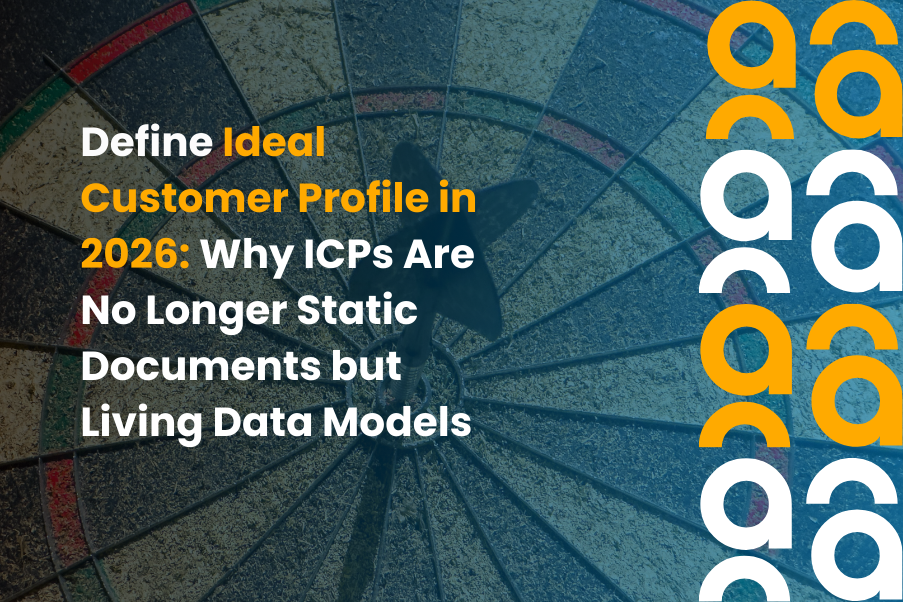 Define Ideal Customer Profile in 2026: Why ICPs Are No Longer Static Documents but Living Data Models
Define Ideal Customer Profile in 2026: Why ICPs Are No Longer Static Documents but Living Data Models -
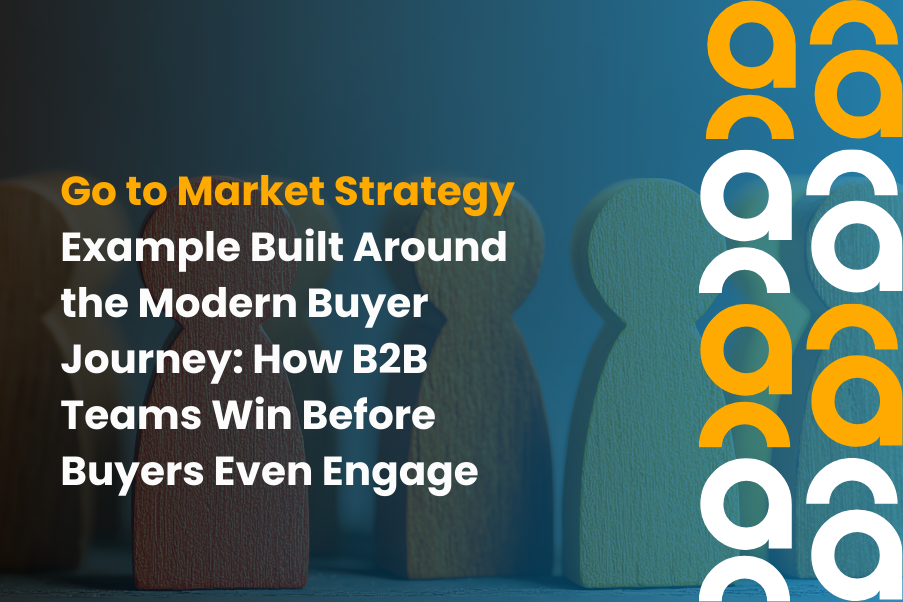 Go to Market Strategy Example Built Around the Modern Buyer Journey: How B2B Teams Win Before Buyers Even Engage
Go to Market Strategy Example Built Around the Modern Buyer Journey: How B2B Teams Win Before Buyers Even Engage -
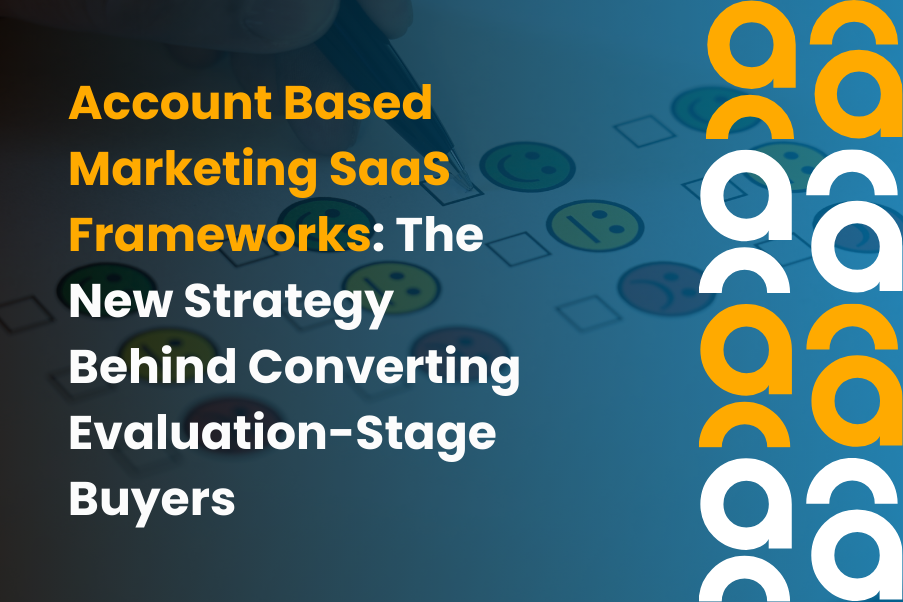 Account Based Marketing SaaS Frameworks: The New Strategy Behind Converting Evaluation-Stage Buyers
Account Based Marketing SaaS Frameworks: The New Strategy Behind Converting Evaluation-Stage Buyers -
 What 2026’s Best-Performing Teams Do Differently when it comes to B2B Account-Based Marketing Campaigns
What 2026’s Best-Performing Teams Do Differently when it comes to B2B Account-Based Marketing Campaigns -
 B2B Account Based Marketing in an Over-Messaged World: The Rise of Context-First Personalization
B2B Account Based Marketing in an Over-Messaged World: The Rise of Context-First Personalization

